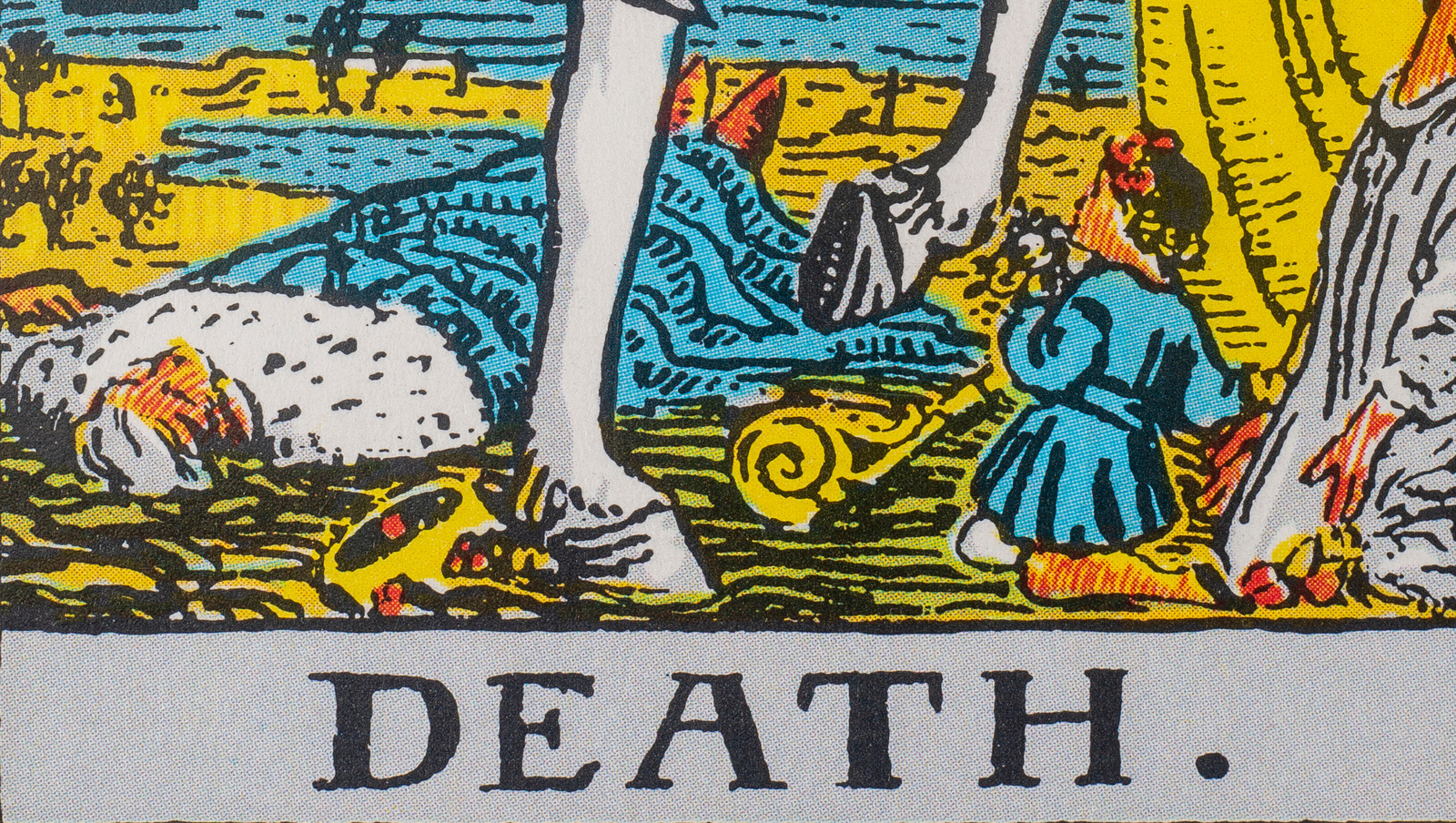The Death card in tarot, traditionally feared and misunderstood, presents an enigma rich with symbolism and profound meaning. Have you ever pondered what it might signify in your life? Is it a harbinger of doom, or could it be a catalyst for transformation? This intricate card embodies a paradoxical duality: an ending and a beginning, a conclusion and a rebirth. Let’s delve into the multifaceted interpretations of the Death card and uncover the myriad ways it can play a pivotal role in one’s spiritual journey.
At first glance, one might envision a grim reaper wielding a scythe, cloaked in shadows. This imagery evokes fear, often leading to the misconception that the Death card pertains solely to physical demise. However, tarot practitioners assert that the Death card predominantly encapsulates transformation. It speaks to the cycle of life, wherein every conclusion paves the way for new beginnings. Embracing this concept requires us to overcome our apprehensions, reframing our viewpoint towards life’s inevitable changes.
Transformation is often the underlying theme when one draws the Death card. The death it signifies is seldom literal; rather, it reflects the end of a specific phase, relationship, or mindset. Consider, for instance, the metamorphosis of a caterpillar into a butterfly. The caterpillar must undergo a period of darkness, isolation, and patience within its chrysalis. After this introspective period, it emerges, rebirthed and infused with newfound vitality. In human experience, such scenarios manifest when one undertakes a significant life change—whether it be moving to a new city, terminating a stagnant relationship, or embracing a novel career path. The Death card encourages us to shed old skins and embrace renewal.
Central to the card’s interpretation is the question: What is it that you need to release? This inquiry invites contemplation about the aspects of your life that may no longer serve you. Perhaps it’s an outdated belief system, unrealistic expectations, or even toxic relationships that dampen your spirit. The Death card prompts introspection, urging you to identify and relinquish these burdens. This shedding process, while uncomfortable, is essential for personal evolution.
The act of letting go could be perceived as a challenge, a daunting task that compels us to confront our fears. Individuals often cling to the familiar, fearing that the unknown may yield discomfort or failure. Yet, the transformative power of the Death card beckons us to confront these insecurities. It serves as a reminder that not all endings are devastating; some may lead to the emergence of opportunities and renewed hope. By bravely permitting ourselves to relinquish what no longer serves our higher purpose, we open the door to growth and expansion.
In a more practical context, the Death card can be interpreted through various lenses—relationships, careers, or personal aspirations. For example, in a romantic reading, the Death card might suggest that a current relationship has run its course, signaling the need to close that chapter. With closure comes the possibility of new connections, fostering emotional healing and the chance for a deeper understanding of oneself. Similarly, in professional pursuits, this card may indicate a career shift or the need to transition into a new field that aligns more closely with one’s passions. In every scenario, change, albeit uncomfortable, often leads to revitalization.
Furthermore, the Death card embodies the principles of acceptance and resilience. Life is a series of cycles, and with each cycle comes the inevitability of change. By embracing the transient nature of existence, we cultivate a mindset that welcomes growth. This acceptance fosters resilience, allowing one to navigate life’s uncertainties with grace. Recognizing that each ending heralds a new beginning equips individuals with the emotional tools necessary to thrive, even amidst adversity.
Another layer of the Death card’s meaning is its association with the notion of surrender. Surrendering does not equate to weakness; rather, it signifies an understanding that one cannot control every aspect of life. There is power in letting go and trusting the universe’s timing. When we release our tight grip on outcomes, we become open to receiving what truly aligns with our soul’s journey. The Death card urges us to cultivate faith in the process, relinquishing our fear of the unknown to embrace the fluidity of life.
In conclusion, the Death card presents a complex tapestry of meanings that transcend traditional interpretations associated with mortality. It stands as a profound reminder of the beauty inherent in transformation and renewal. By understanding its significance as an invitation to explore personal growth, release unhelpful attachments, and embrace change with grace, we can reframe our fears into opportunities for profound enlightenment. As the liminal space between one phase of life and the next emerges, consider the question: What are you willing to release in order to embrace the new? By engaging with the essence of the Death card, individuals may find themselves on a path toward personal evolution and spiritual awakening, forever guided by the themes of transformation and rebirth.









Leave a Comment